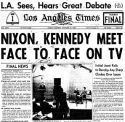 While riding along Route 66 and stopping for lunch in Seligman, AZ, an odd thought popped into my mind. It was amplified, a bit, by listening to a 99% Invisible Podcast on a Plaque for Nathan Bedford Forrest in Memphis. That podcast pointed out that monuments don’t just appear in the wake of someone’s death — they are erected for reasons specific to a time and place.
While riding along Route 66 and stopping for lunch in Seligman, AZ, an odd thought popped into my mind. It was amplified, a bit, by listening to a 99% Invisible Podcast on a Plaque for Nathan Bedford Forrest in Memphis. That podcast pointed out that monuments don’t just appear in the wake of someone’s death — they are erected for reasons specific to a time and place.
I noted in a past post how many towns along Route 66 are dying or waning, but have a growing business in Route 66 tourism. There are loads and loads of Tourist / Money Separators being produced with variants of the Route 66 logo. But there’s no love for Route 6 or 60 or 70 or 80 or 99. There’s just a little love for the Lincoln Highway (US 30 / US 40). Why so much love for Route 66?
But then I began to think about the nostalgia, and who you see in the material. I thought about the Green Book, the guide for Negro motorists that told them where it was safe to travel. I thought about the implicit Jim Crow rules in many states, and wondered how many Negros and minorities traveled US 66. Remember, the heyday that is being remembered is from the Steinbeck days to the Eisenhower era and the starting of the Interstates. That was the period of loads of discrimination, even in non-Southern states (think about Las Vegas and the Casinos, for example).
I then begin to think about Trump, “Make America Great Again”, and the nostalgia for the “Good ‘Ol Days”. Often, that is code speak for the days when men had the privilege, when more specifically, white men had the privilege. The 1930s through 1950s, those “Happy Days” that were lily white, except for that jungle rock music.
And so I wondered: Could the Route 66 nostalgia be similar to Confederate Statues? Could it be a veiled longing for when America was last perceived to be great, the days when minorities were in their place, when the White Male breadwinner could get behind the wheel of his gleaming Buick or Chevrolet and motor down the road, secure in the knowledge that they could find a clean motor court that would accept them, and gas stations with servile attendants to address their every need. Even during the dustbowl migration, when the great road was a path for survival, it was survival for the White Farmers escaping Kansas, looking for work in the fields of California, which didn’t have the need to import those braceros.
I thought about it, and the romance of the Mother Road wasn’t quite so romantic anymore. Bringing down the statues is raising awareness of many other ways of memorializing.


Don’t overthink this. Route 66 is a beautiful trip, highlighting many changes in culture, scenery, food and experiences along the way, combined with memories of road trips with the family. That’s aboutvit.